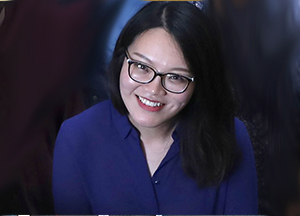
Daisy Wang, UNSW
The electronic properties of materials are determined by the atomic constituents and their crystal lattice structure. Engineered electronic materials, which are created by applying a designed spatially periodic potential, a superlattice, have offered a powerful way to alter the properties of natural crystals in a controlled manner.
Imposing spatially periodic electric field via nanolithography has also been proven to be a powerful technique to create a superlattice. It offers an excellent control of the lattice parameters and can be easily integrated into many existing device architectures, e.g. a semiconductor FET, which has an advantage of well-established fabrication technology and superb device quality.
Using this approach, we demonstrate a versatile device architecture that allows independent control of carrier density and potential modulation across a wide range and detect the artificial mini bands via the low field Hall effect. Hall resistance shows multiple transitions from electron-like to hole-like behaviour as the chemical potential is swept through the different artificial bands, consistent with our band structure calculations.
We are able to continuously tune the artificial bandstructure from free electrons to those of electrons in graphene-like and eventually Kagome-like bands and show the evidence of the existence of strong correlated electrons.
About the presenter
Daisy Wang is a Research Fellow in the School of Physics, University of New South Wales, Sydney. Daisy completed her PhD in experimental condensed-matter physics. Her research was focused on electrical transport of holes in low-dimensional semiconductor devices.
Daisy is currently a research fellow in FLEET, where she works on FLEET’s research theme 1: artificially engineered topological dissipationless systems.
